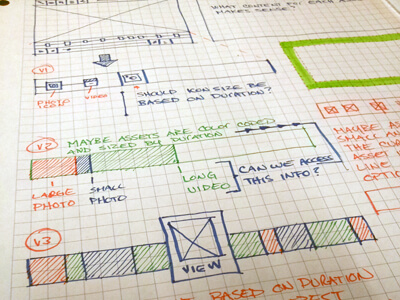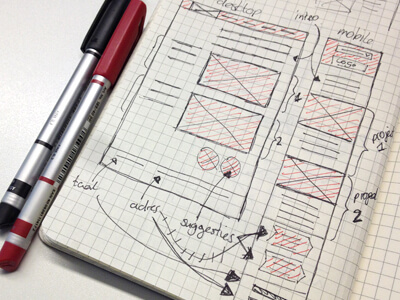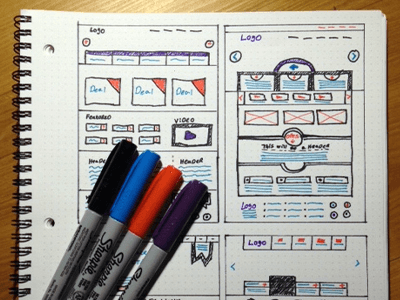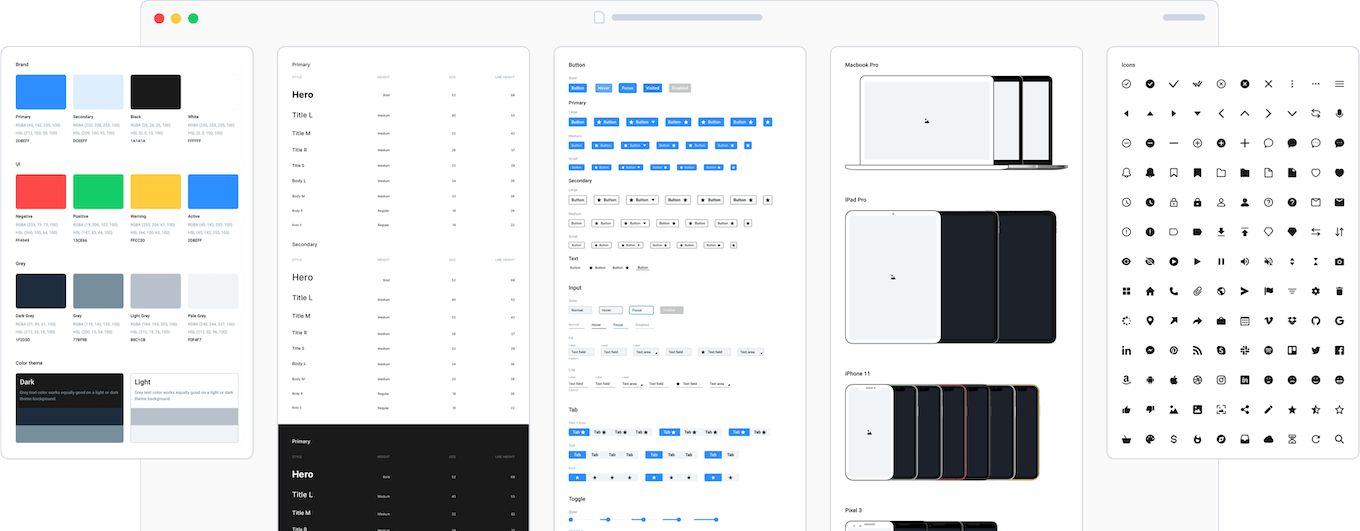Wireframes and colors
A graphic design mock-up and a high fidelity wireframe share several characteristics which makes difficult to see where the work of the UX expert ends and the graphic designer’s starts. Not yet prevalent in Hungary, smart project planning beyond the waterfall model makes possible for the UX and the graphic designer to work on the same task together.



Several UX designers avoid using images and colors while creating wireframes. Colors direct the user’s eyes, convey meaning and help to separate elements therefore I believe that a detailed wireframe must involve colors. Using colors in a wireframe is not about beauty. For example to display error messages we can use any kind of red but must avoid blues and greens. The task of the graphic designer is to decide the final shade of the color. Jakub Linowski, well-known author on wireframing states:
“Perhaps it has something to do with the tradition that colour is often avoided at the wireframe level. I still use colour just to emphasize certain elements, and red for actions.”
Read more on colors in wireframing by Jakub Linowski
Basic colors to use on wireframes
The following colors are helpful on smaller projects as well.
Black: Majority of our wireframe will be displayed in black.
Gray: To help texts, less important information.
White: To label dark or colored buttons.
Red: For error messages. If the client’s brand color is red as well (e.g. vodafone.hu) we should use a different type of red for error messages. Use exclamation mark after or warning sign before error messages.
Dark blue: Mark links with underlined dark blue font for functional clarity even if the graphic design will use different colors.
Green: Positive meaning, use for positive feedback following a successful user action, e.g. “Your order has been placed successfully“.
Highlighter: We must choose one additional color that we will use consistently to highlight important elements.
Additional colors for more complex projects
Secondary highlighter: We may use two colors to highlight text if we wish to promote different information. E.g. general highlighter is blue and important information regarding shopping is marked with orange.
Pale pink: Use as a background color to put more emphasis on error messages.
Pale yellow: Use as a background color for informational messages. For example to discretely inform the user to activate her registration use a pale yellow ribbon at the top of the page which does not disturb her in her work. Use to highlight search results.
Orange: Use for warnings and blocking but not urgent issues.
Keep in mind, that the primary audience of our work contains marketing experts and managers who need colors to understand and interpret the wireframes. Without benefiting from the use of colors these stakeholders might miss important features in our wireframes.
recommended
articles
Find out more about the topic




Share your opinion with us